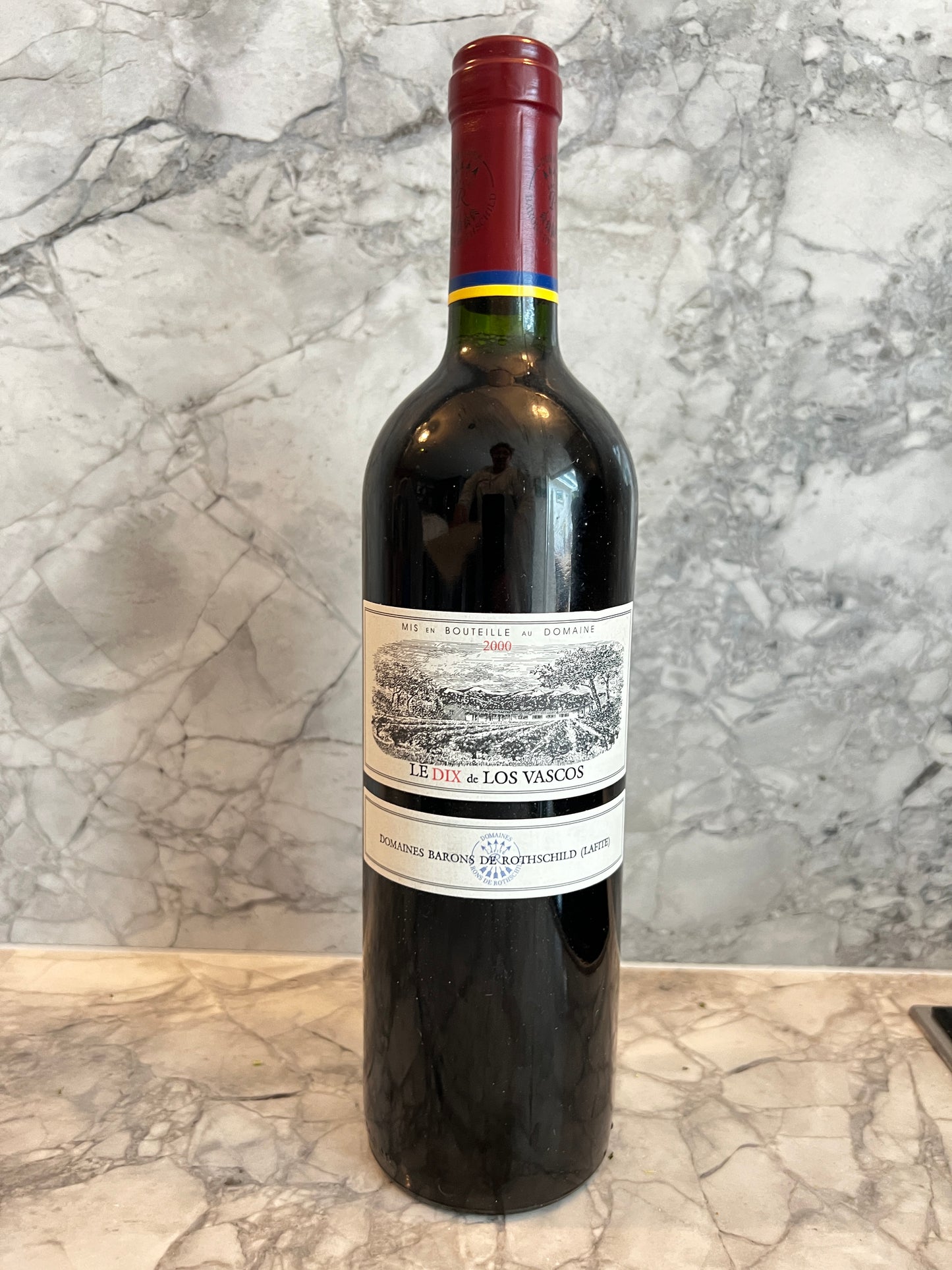Le Dix de Los Vascos, 2000 (Barons de Rothchilds Lafite)
Le Dix de Los Vascos, 2000 (Barons de Rothchilds Lafite)
Couldn't load pickup availability
“LE DIX”
Time Regained.
With Le Dix, whose first vintage celebrates ten years of Domaines Barons de Rothschild Lafite in Chile, we aspire to create a timeless icon from our oldest vines.
To make this blend of Cabernet Sauvignon and Syrah, we select the best grapes of the year. The Cabernet Sauvignon is sourced from our historic vineyard called “El Fraile” (the Monk), planted at high density on sands and silts more than half a century ago and whose genetics have been preserved thanks to the layering system. The Syrah comes mainly from El Mirador, the first vineyard we planted on the hillsides.
Aged for 18 months in oak barrels made by the “Tonnellerie des Domaines” cooperage in Bordeaux, Le Dix is a wine for long-term cellaring that will reveal its full potential with time.
Vineyard:
At Viña Los Vascos, agriculture is important to us but we do not only grow vines. We dream of transforming our vast territory into a balanced ecosystem where man and nature coexist in harmony.
We are free in spirit. We combine Chilean traditions with the know-how of DBR Lafite to produce wines in our image.
THE VINEYARD
Viña Los Vascos is located in the Central valley of Chile, in the Colchagua region, between the Andes and the Coastal Mountain Range, 200 km south of Santiago.
It is a secret that the locals have known for generations: the land of Viña Los Vascos has an ideal microclimate: plenty of sun and water, semi-arid soil, and no frost, thanks to the influence of the Pacific Ocean. The perfect conditions to produce exceptional wines.
Surrounded by mountains at the foot of Mount Cañeten, the property covers 3,600 hectares, 640 of which are planted with vines, making it one of the largest wineries in the region.
Located 150 m above sea level and only 40 km from the coast, the vineyard benefits from the cooling influence of the Pacific Ocean. This particular location between two major climatic influences – the cooling Pacific Ocean to the west and the Andes to the east – creates a microclimate with a strong contrast between hot, dry days and cool, wet nights.
The dramatic temperature difference between day and night can reach up to 30°C in the same day, which is particularly favourable to the slow ripening of our Cabernet Sauvignon.
The soil of Viña Los Vascos is of volcanic origin. Three main types can be distinguished: weathered granite, clay, and shale. The heart of the property, at the bottom of the valley, is made up of sand and clay alluvium left by the erosion of the neighbouring granitic hills; as well as Tosca, a very hard soil made up of volcanic ash that has been transported by the rivers to the plains and compacted over time.
Higher up, in the surrounding foothills, are the terroirs of El Mirador and Santa Lucia, where the granites are particularly suited to complex, long-lived wines. This is where we planted the vines to produce the grapes for the Cromas Grande Réserve wines.
The grape varieties of Viña Los Vascos are Cabernet Sauvignon (68%), Carmenère (9%), Syrah (8%), Chardonnay (5%), Cabernet Franc (2%), and Sauvignon Blanc (2%).
Due to the large plantings carried out in the early 1990s, the vineyard is divided between a group of plots with an average age of 15 years and another group of 40 to 50 years old. The oldest vines are 60 years old.
Viña Los Vascos relies on traditional growing methods. Drip irrigation is adapted to the strict needs of the vines and green harvesting is practised on the plots that require it in order to always meet a quality objective.
HISTORY
In the 18th century, a Basque family was the first to plant vines in this lush region of central Chile. When we acquired Viña Los Vascos in 1988, we were among the first European families to purchase a vineyard in the region.
Extensive studies were carried out to identify the best terroirs, the vineyards were restructured, and the bodega was restored to meet the new quality requirements for wine-making and ageing.
Share


